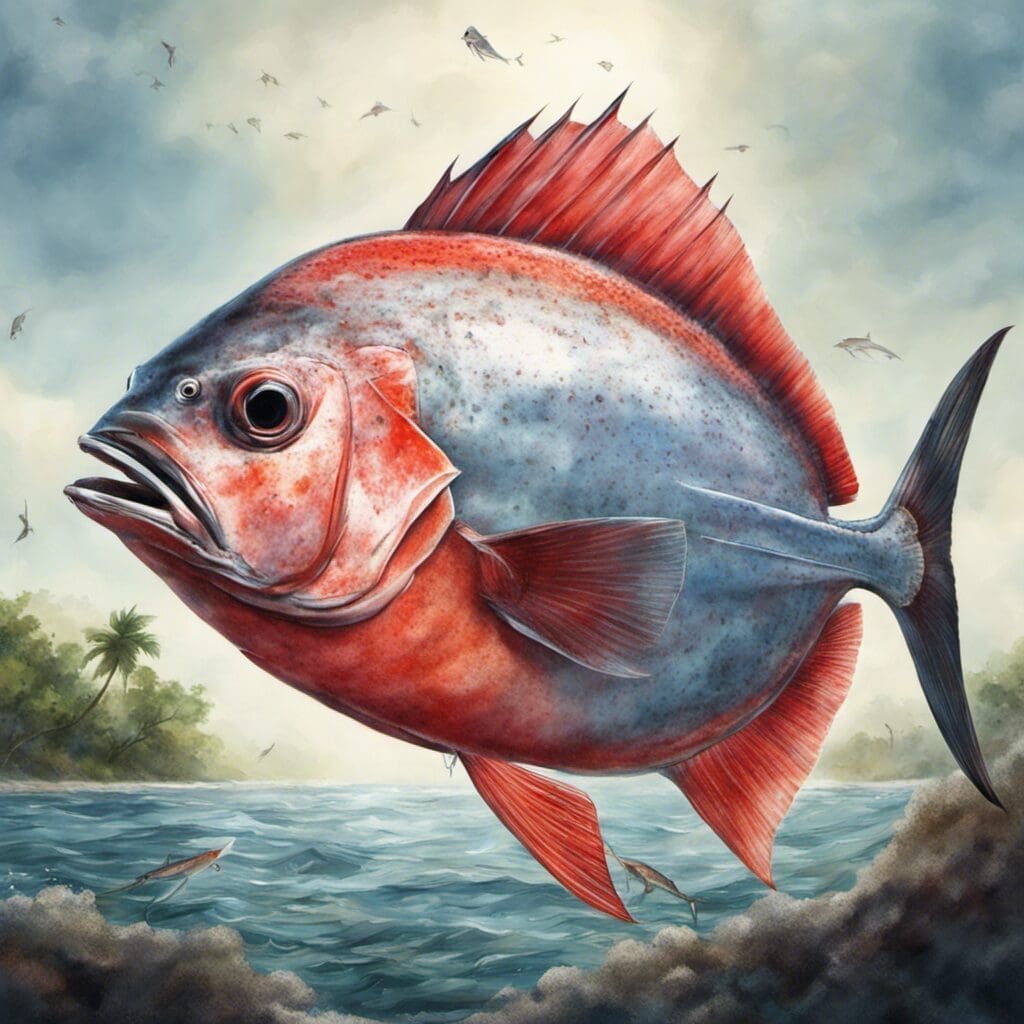Introduction
The Opah, also known as the moonfish, is a fascinating species from the family Lamprididae. It is one of the very few warm-blooded fish in the world.
Conservation Status
Opahs are listed as a species of “least concern” according to the International Union for Conservation of Nature. Conservation efforts are ongoing with fishery regulations in place to prevent overfishing.
Statistics
| Statistic | Average | Range |
|---|---|---|
| Length | 1.1 meters | 0.9 – 1.8 meters |
| Weight | 60 kilograms | 30 – 90 kilograms |
| Average Lifespan | 12 years | Not Specified |
Distribution
Opahs are found in temperate and tropical waters around the world, including the regions of the Pacific Ocean, Atlantic Ocean, Indian Ocean, and the Mediterranean Sea. No particular migration patterns have been noticed.
Habitats
Opahs usually inhabit deep marine waters, ranging from below the surface to depths of 500 meters. They are known to prefer temperature range between 7 and 18 degrees Celsius.
When and Where to See
Observation of Opahs is relatively challenging due to their deep-sea habitat. However, they are typically seen up on the surface during the morning hours and late in the evening.
Best Fishing Locations
1. California Bight, USA
2. Sardinia, Italy
3. South of Baja California, Mexico
4. Tasmania, Australia
5. Coromandel Peninsula, New Zealand
6. North East Atlantic, United Kingdom
7. South Atlantic, Brazil
8. Northern Indian Ocean, Sri Lanka
9. Central Pacific, Japan
10. South China Sea, Philippines
How to Catch
The best bait for catching Opahs is typically smaller local fish species or squids, with jigging, trolling and bottom fishing proving to be successful techniques. The optimal time to fish for Opahs is early morning or late at night.
Identification Guide
Opahs have a large oval body with bright red fins and a silver body, often with white or light blue spots. They are easily distinguishable due to their unique body shape and vibrant coloration.
Culinary
Opah is known for its rich, creamy taste and firm texture. It is also a good source of protein and Omega-3 fatty acids. Grilled Opah with lemon and herbs is a widely appreciated dish.
Additional Information
Opahs are unique in the fish world due to their endothermic abilities, meaning they can maintain a body temperature higher than the surrounding water. Their main predators include larger shark species, while overfishing presents a human-induced threat.

